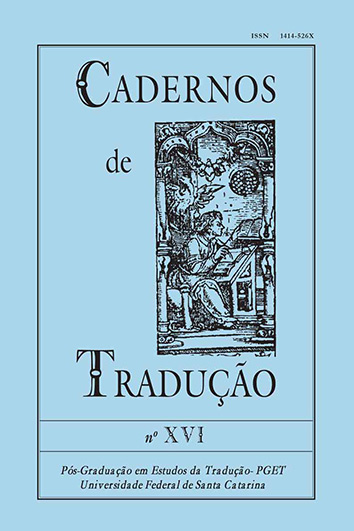The third language: A recurrent textual restriction that translators come across in audiovisual translation.
DOI:
https://doi.org/10.5007/%25xResumo
If the process of translating is not at all simple, the process of translating an audiovisual text is still more complex. Apart rom technical problems such as lip synchronisation, there are other factors to be considered such as the use of the language and textual structures deemed appropriate to the channel of communication. Bearing in mind that most of the films we are continually seeing on our screens were and are produced in the United States, there is an increasing need to translate them into the different languages of the world. But sometimes the source audiovisual text contains more than one language, and, thus, a new problem arises: the ranslators face additional difficulties in translating this “third language” (language or dialect) into the corresponding target culture. There are many films containing two languages in the original version but in this paper we will focus mainly on three films: Butch Cassidy and the Sundance Kid (1969), Raid on Rommel (1999) and Blade Runner (1982). This paper aims at briefly illustrating different solutions which may be applied when we come across a “third language”.Downloads
Publicado
01-01-2005
Como Citar
Gimbert, M. C. (2005). The third language: A recurrent textual restriction that translators come across in audiovisual translation. Cadernos De Tradução, 2(16), 147–160. https://doi.org/10.5007/%x
Edição
Seção
Dossiê
Licença
Copyright (c) 2005 Cadernos de Tradução

Este trabalho está licenciado sob uma licença Creative Commons Attribution 4.0 International License.
Autores mantêm os direitos autorais e concedem à revista o direito de primeira publicação, com o trabalho simultaneamente licenciado sob a Licença Creative Commons Atribuição 4.0 Internacional (CC BY) que permite o compartilhamento do trabalho com reconhecimento da autoria e publicação inicial nesta revista.
Autores têm autorização para assumir contratos adicionais separadamente, para distribuição não exclusiva da versão do trabalho publicada nesta revista (ex.: publicar em repositório institucional ou como capítulo de livro, com reconhecimento de autoria e publicação inicial nesta revista).






















































